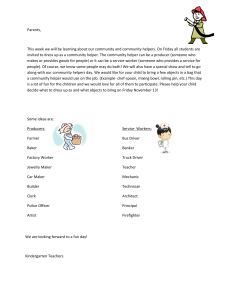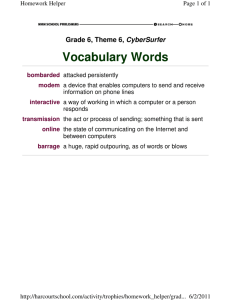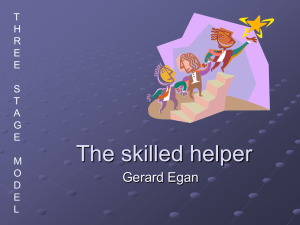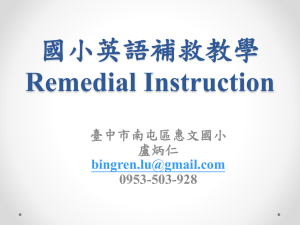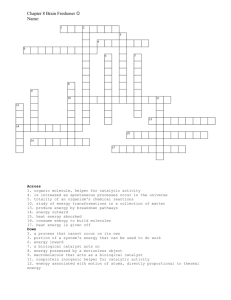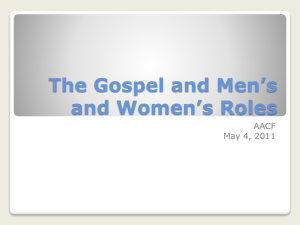The Question
advertisement
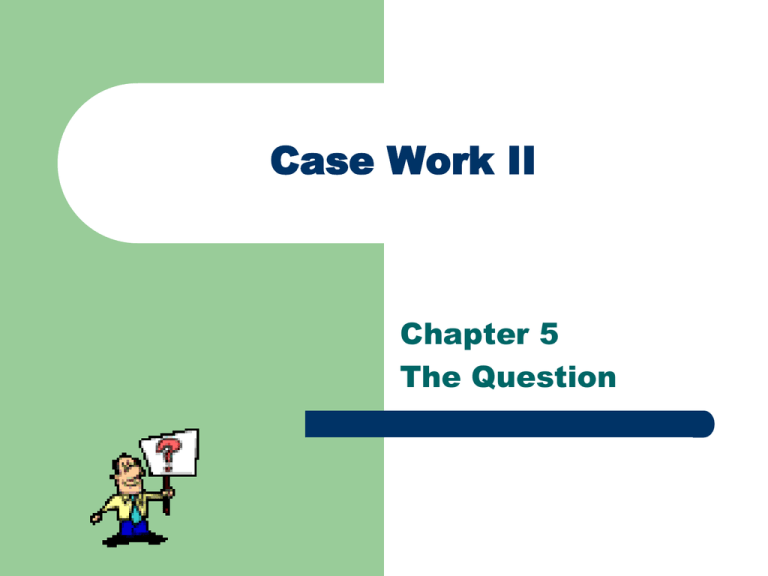
Case Work II Chapter 5 The Question The Question The Need to Inquire & Divulge Ask questions sparingly. Ask mostly open-ended questions. A therapist/helper might need to ask questions in order to bridge uncomfortable silences and to push ahead when they seem to be stuck. Divulging involves cleansing, “I speak, I reveal, I come clean.” The Question Questioning the Question Benjamin believes helpers ask too many questions. See bottom of page 135. Will the question I am about to ask further or inhibit the flow of the interview. The Question Open Vs. Closed Questions The open question is broad. The closed question is narrow. The open question allows the client full scope. The closed question limits a person to a specific answer. The open question invites a person to widen their perceptual field. The Question Open Vs. Closed Questions (cont.) Closed questions curtailed the perceptual field. Open questions solicits one’s views, opinions, thoughts, and feelings. The closed question usually demands cold facts only. The open question may widen and deepen the contact. The open-ended question may open the door to good rapport. The Question Direct Vs. Indirect Questions Direct questions are straight queries. Indirect questions inquire without seeming to do so. The indirect question usually has no question mark at the end, and yet it is evident that a question is being posed and an answer sought. The Question Double Questions Two questions in one is not good. At best, it limits the client to one choice out of two. At worst, it confuses the client and the interviewer. Bombarding Bombarding – client being asked many questions back to back The Question The Shoe on the Other Foot Not every question posed to the helper needs to be answered. Helpers tend to be unprepared for and more or less wary of questions directed at them. Not every question calls for an answer, but every question demands respectful listening and usually a personal reaction on our parts. Listen with our “ third ear ” The Question The Client’s Questions About Others Usually the helper cannot reveal anything. Often times it is good to refer to the life space of the client. The Client’s Questions About Us Answer directly when appropriate. Do not take over the stage for long, and revert to the client as soon as possible. The Question The Client’s Questions About Themselves Usually be honest and get the client involved. “Why” Today the word why connotes disapproval, displeasure. It communicates that the client has done “wrong” or has behaved “badly”. The Question “Why” (cont.) Consequently – The client will withdraw into themselves, attack or rationalize, but the client will not come closer to us or to themselves. The why seems to demand of the client an answer that they might not possess, one that is unclear to them, or one that the client is not willing to share – at least not yet, perhaps because of the way the interviewer is going about obtaining it. The Question “Why” (cont.) If the client perceives that our attitude(s) is/are unthreatening and if we use “why” simply to obtain factual information that the client possesses and we feel we need, then our use of the word should not cause undue damage. Concluding Reflections How to Use Questions See page 156 When to Use Questions Ask questions when you (helper) have been unable to hear, listen, or understand for one reason or another. A second situation relates to whether we have been understood by the client. Concluding Reflections When to Use Questions I may want to phrase a question to assist the client in clarifying or exploring further a thought or feeling they have been expressing. Need for more information. The Question in Retrospect See pp. 160-164
